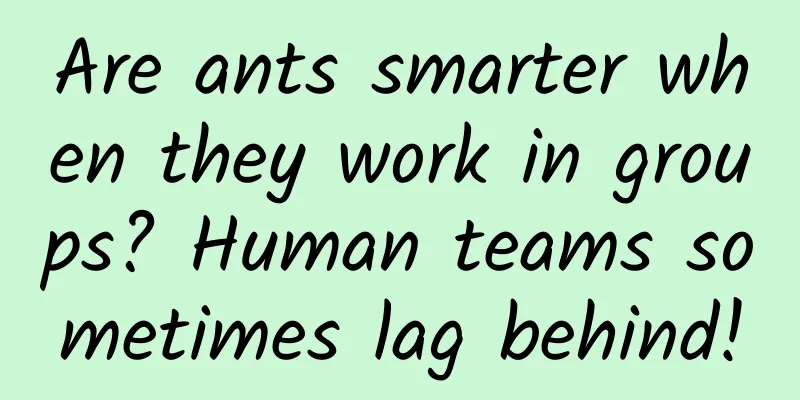Why these plants? They are delicious and can fight zombies

|
Author: Riboapartment (Kunming Institute of Botany, Chinese Academy of Sciences) The article comes from the Science Academy official account (ID: kexuedayuan) —— I have been staying at home for a long time to fight the epidemic. My mother wants to drive me away. I am bored and decide to kill time by playing games. New game? No. I am a person who loves nostalgia and classics, so I opened "Plants vs. Zombies", which I have played for ten years. The familiar BGM sounded, I planted the first sunflower, harvested the first sun, planted the first pea shooter, killed the first zombie, and had the first brain eaten... No, I only have one brain. (Image source: Bilibili) This game is really magical. Cute plants can be transformed into powerful monsters after being armed with various weapons, and poor zombies have to go through a lot of hardships to eat their brains. Peas can be launched, mushrooms can explode, and there are also carnivorous plants that "eat people without blinking an eye"... The delicacies on the table can be transformed into powerful weapons in the game. What’s interesting is that many of these plants’ superpowers are not made up out of thin air, but are their real abilities to survive in nature. Perhaps their attack power is just slightly exaggerated. So what are the delicious and powerful plants in the game? Let me tell you about them. "Plants vs. Zombies" is a puzzle strategy tower defense game developed by PopCap Games. (Image source: game screenshot) Pea, what makes you a shooter? The pea shooter is considered a primary plant weapon, and its basic attribute is to "BiuBiuBiu" shoot peas to attack zombies. Then I am curious, why does the pea appear as a shooter? As a world-class popular vegetable, peas (Pisum sativum) are valuable from head to toe. Pea tips can be used to cook soup and hot pot, fresh pea pods can be stir-fried with meat slices, green peas are a versatile vegetable, and mature dried peas are also delicious dried goods. But it is so familiar, why have I never heard of it having such an explosive performance like in the game? The Pea Shooter and Peas in "Plants vs. Zombies" (Photo credit: Qiu Xi) The peas we usually see will not burst. Thousands of years of human domestication have made them no longer wild. They live a happy life every day. They just need to grow fat and they will not have to worry about no one taking care of them. The reproduction problem can be left to humans. Unfortunately, most of its relatives are not so lucky. Faced with the problem of the growth of the next generation, in order to provide more living space for their offspring and avoid competition and killing among their children, they need to find ways to spread their seeds farther. For this reason, many Vicia spp. plants have evolved a fruit-bursting strategy. The pods twist and deform as they mature, until they are ripe and dry, when they suddenly burst due to the twisting force, scattering the ripe peas everywhere. This seed ejection phenomenon also occurs in many legumes. Many other plants, such as the Impatiens family and the Oxalis family, have also chosen this "pea shooter" seed ejection method to make their seeds fly farther. Twisted wild pea pods (Image source: Wikipedia) Interestingly, if we only look at the appearance of the Pea Shooter, a plant called Diospyros cathayensis may look more similar to it. Its flowers are small and delicate in the shape of an altar. From this angle, the side profile of the Diospyros cathayensis looks very much like the Pea Shooter! The side profile of the flower resembles the Pea Shooter, but it cannot shoot peas. Left: Persimmon flower; Right: Persimmon seed (Image source: China Plant Image Library) Ejection of Viola seeds (Editing and production: Qiu Xi) Iron-handed squash is actually a delicacy on the table. Still powerful In the game, the image of the gourd is deeply rooted in people's hearts, and every "gully" on its face seems to be the vicissitudes of life. It looks like an iron fool, but it has a lot of "tonnage" and often uses its potential (gravitational potential energy) to suppress people (stiffness). In reality, the chayote melon is mostly found in southern my country, and is also called foreign loofah or chayote melon (Sechium edule). Although it is a delicious dish, it is also a powerful creature that can hurt people. The chayote in real life and the squash in "Plants vs. Zombies" (Photo credit: Qiu Xi) Chayote is not a Chinese product, but an imported product from South America. It inherits many characteristics of wild growth of American plants. It is widely planted in Yunnan, Guangdong, Guangxi and other places in my country, as well as tropical areas in Asia. In many areas with good water and heat conditions, chayote is very easy to grow around, and it can climb everywhere along the vines. But it is not like pumpkin, which is too heavy to climb the tree, nor is it like loofah, which slowly withers and dries up after maturity and has no killing power. It may fall from the sky at any time after maturity. I guess the creator of the game came up with this idea after being hit by this thing! I prefer bugs to zombies “Ah~” The Piranha Plant stretched its neck and swallowed a whole zombie in one gulp, then chewed it voraciously, which looked terrifying. So, does the Piranha Plant really exist on Earth? The answer is obviously no. However, if we put the scale on the size of small insects, we can easily find the prototype of the Venus flytrap, which is the famous insectivorous plant Dionaea muscipula. This carnivorous characteristic often makes people think that the Venus flytrap is very ferocious, but in fact, it must have 10,000 beasts running in its heart, shouting madly: eating meat is only a last resort, all because of the harsh growth environment, the extreme lack of organic matter that can be absorbed around it, and it has no choice but to take the path of insectivority. It also uses all its tricks in hunting techniques. During the long evolution, the Venus flytrap has formed a trap-like structure: the insect trap is composed of two half-moon-shaped, spiked structures on the edges, with three thin and sensitive tactile hairs distributed inside. Once the prey touches two of the tactile hairs continuously within a certain period of time, the trap-like leaves can quickly close within one-third of a second, and the spiked structures on the leaf edges are tightly interlocked to form a structure like an iron cage, locking the prey firmly inside. Gradually, the two leaves will completely adhere to each other because the insects in the "cage" keep moving and stimulating the leaves, and finally kill the insects and digest them. Venus flytrap predation (Editor: Qiu Xi) The trap-style trap is not only exciting, but also very intelligent. The opening and closing of the three tentacles can distinguish whether it is caused by wind and rain or a real insect has fallen into the trap. The spikes on the leaf edge can select suitable prey when closing. If the insect that falls is too small and provides too little nutrients, it is not worth closing the leaf. Then the insect in the cage formed by the spikes can get out, and the trap will open again, waiting for bigger prey. Venus flytrap (Photo credit: Qiuxi) My name is Xingxingguo, there’s nothing wrong with that! In the later stage of playing "Plants vs. Zombies", I found that the star-like carambolas may be underestimated. If they are connected in groups and used to expand their power, their combat effectiveness will actually have a qualitative leap. Perhaps because it wants to be famous, the carambola changed its name to "star fruit", but there is nothing wrong with it! Because when the carambola is sliced, it is exactly a standard "five-pointed star". Because it tastes bland and sour most of the time, many people have always regarded it as a fruit that wins the market mainly by selling cuteness and sex appeal. In fact, the carambola we usually eat is half-ripe due to the limitation of long-distance transportation. If you have the opportunity to taste the carambola that ripens naturally on the tree, it is full of moisture, sweet and sour, and you will definitely fall in love with this cute star fruit. Twinkle, twinkle little star! Averrhoa carambola belongs to the Oxalis family and is often written as "star fruit". It is native to Malaysia and Indonesia and is now widely planted in tropical forests, roadsides or courtyards. When in bloom, the carambola tree is full of girlishness, with bunches of inflorescences decorating the branches, and red flowers with white edges adorning the branches, so prosperous; when the fruit is in season, the fresh and tender fruits are hanging between the layers of densely intertwined branches and leaves, as if a tree is full of sour and sweet little stars. Many plants in this family are very cute, and the red-flowered wood sorrel Oxalis corymbosa commonly seen on the roadside is a common representative species of this family. Left: Oxalis eryngii; Right: Carambola (Photo credit: Qiuxi) I am a cattail, but I can't meow Do you remember the cute Cattail that sat on a water lily and loved to shoot little spikes everywhere? However, the real "Cattail" does not have a cute cat head, cannot shoot little spikes, and the shape of its leaves is completely different, but the shape of its tail is still very consistent. The term "Cattail" generally refers to an aquatic plant, Typha orientalis, which is commonly found in lakes, ponds, swamps, and streams. It is the bunches of "sausages" that grow by the water. This "sausage" is the female inflorescence of the genus Typha. Left: Cattail in Plants vs. Zombies; Right: Cattail inflorescence (Photo credit: Qiuxi) The really interesting thing about cattails is the process of the fruit bursting. When the fruit is ripe, each "grilled sausage" looks like it has exploded hair. If you gently stroke its inflorescence, a large amount of hair will continuously pour out, which can be called a decompression artifact. A female inflorescence may have tens of thousands of female flowers, which will use the power of the explosion and the wind to spread as far as possible. The furry seeds of this cattail are extremely easy to ignite and were used in ancient times as fire starters, as well as as fillings for pillows or clothing. Grass sprouts and cross-bridge rice noodles (Photo credit: Qiuxi) The point is, cattails can be eaten, and they are delicious! The new and tender rhizomes of cattails are shaped and colored like ivory, hence the name grass sprouts, which are the highlight of Yunnan cross-bridge rice noodles! In Jianshui and other areas of Yunnan, grass sprouts are also used for salads, soups, and stir-fried meats. The price is often more expensive than "current pork", and it is one of Yunnan's famous mountain delicacies. It is most appropriate to use the saying "the best taste in the world is pure joy" to describe the freshness of grass sprouts. Exploding cattail sticks (Video source: Haokan Video) Tiger or kitten? Don’t look at the body shape, look at the ability! In Plants vs. Zombies, there are a number of mushroom-like plant weapons, including the Little Spray Mushroom, Sunshine Mushroom, Charm Mushroom, Timid Mushroom, Destruction Mushroom, etc. Among them, the one that impressed me the most was the colorful and cute Charm Mushroom. Charm Mushroom is small in size, but it can make all kinds of zombies obedient. This power is very similar to the famous Yunnan mushroom - the delicious and deadly Jianshouqing. Charm mushroom and green lily (Photo credit: Qiu Xi) Jianshouqing is one of the common wild edible mushrooms in Yunnan. It belongs to the large family of boletus. It does not refer to a single type of boletus, but is a common name for a type of boletus whose fruiting body turns indigo blue after injury. Pink-capped boletus, red-footed boletus, and pink-covered boletus are all called Jianshouqing. Every May and June, Yunnan ushers in the famous mushroom-eating season. Mushrooms such as chicken mushroom, matsutake, milk mushroom, dry mushroom, and red mushroom are on the market one after another, with a dazzling array of them. A feast of wild mushrooms belonging to Yunnan has begun. It is said that every Yunnan person has a friend who has been poisoned by eating the mushroom. This kind of mushroom can easily lead to poisoning if not properly handled after purchase. In addition to vomiting and diarrhea, the poisoning reaction is often accompanied by hallucinations. The poisoned person often has hallucinations, with various little people floating in front of their eyes, and they seem to be able to fly with them, often accompanied by mumbling foolish words or dancing and singing. The various reactions are very similar to the zombies in Plants vs. Zombies that are charmed by the charm mushroom. Fortunately, the hallucinogenic toxin lysergic acid ethylenediamine contained in the green onion is easily decomposed at high temperatures. As long as the heating is ensured uniformly and for sufficient heating time during the frying process, it is relatively safe to eat the green onion. Can't beat zombies, but a famous troll in the mushroom world In "Plants vs. Zombies", there is a unique mushroom army, which is the best line of defense at night. Among them, the charm mushroom wins by "seduction", and the power of the spray mushrooms should not be underestimated, including the big spray mushroom, the small spray mushroom, etc. They can spray a lot of smoke around to attack zombies. In nature, a type of mushroom called puffball can also spray out a lot of "smoke". They come in different shapes and colors, and if you pinch them lightly, they will "puff" and spray out smoke, which is very interesting and a bit healing. Reticulated Puffball and the Puffball in "Plants vs. Zombies" In a broad sense, puffball is a general term for a class of fungi, including the genera Calvatia, Lycoperdon and Scleroderma of the Basidiomycetes. It is generally spherical, white when immature, smooth and elastic to the touch, and looks like a delicious puff ball; when it matures, it becomes old and faded, the epidermis becomes loose, and small cracks appear on the top, and a large number of spores will be ejected like smoke. Of course, in addition to being fun, some common puffballs can also be eaten, but they should be eaten when they are young and tender, because at this stage the flesh of the puffball is white, firm and textured, and can be sliced thinly and simply cooked to make a delicious dish. The mature puffball not only looks bad, but is also somewhat toxic! Eruption of puffball spores (Image source: Youku video) Seasons change and plants flourish and wither. The game market is changing rapidly, but classics are always classics, just like the unchanging delicacies on the table. Even though various games have sprung up in recent years, "Plants vs. Zombies" is still our favorite. The various plant weapons in the game can be found on both the delicious human dining tables and the cruel production battlefields of nature. As long as you explore carefully, you can find the interesting stories behind them. I won't say any more. I'm going to go stir-fry some mushrooms and start another game... |
<<: Xiamen’s specialty dried fish is actually a nationally protected species?
>>: How to take a “natural photo” of the earth?
Recommend
The Giant Panda among Birds - Great Bustard
"The feathers of the great bustards flutter ...
A complete analysis of the app’s customer acquisition strategy by bringing in new customers through old customers!
The friend invitation mechanism is a standard for...
Why is it so difficult to kill the “invincible” cockroach? Let’s see the battle between humans and cockroaches →
Cockroaches, scientifically known as Blatta, are ...
Hexingshe Card Live Square Technology Series Professional Courses, the strongest and most comprehensive live square technology
Hexingshe’s Card Live Square Technology Series pr...
Marketing disassembly: conversion rate surge, anchoring effect use cases and cracking methods
The anchoring effect, also known as the anchoring...
How to do automobile marketing in the new era?
Telemarketing is difficult nowadays because the s...
Tips for event planning and promotion!
When it comes to event planning , many people thi...
On this grassland in Sichuan, there are plateau sacred birds and the first wolf protection station
Ten years ago, on the Ruoergai grassland , herder...
Bilibili’s 2020 marketing plan!
Bilibili (English name: bilibili, referred to as ...
With a speed of 600 kilometers per hour, how will high-temperature superconducting electric suspension technology change future travel?
If you go from Beijing to Shanghai 1200 kilometer...
Understand the operating logic of video accounts and Douyin in one article
Recently in a communication group in the operatio...
What are the short video marketing strategies and methods for catering brands?
With the development of the Internet, short video...
Shanghai official reminder! Doing this is very dangerous!
Recently, Shanghai's rumor-busting platform c...
Dafeng SEO Training: How to optimize SEO keyword rankings? How to improve connection quality?
SEO is an inductive science, which cannot be expl...
30 high-quality cases in 18 industries, a must-read for information flow delivery!
This article shares with you 30 high-quality case...









